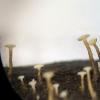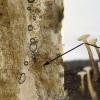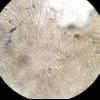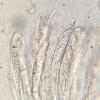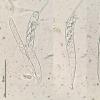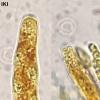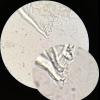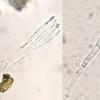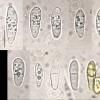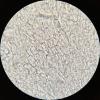
28-10-2025 19:33
 Nicolas Suberbielle
Nicolas Suberbielle
Bonjour à tous,Je voudrais votre avis sur cette r

31-10-2025 09:19
 Lothar Krieglsteiner
Lothar Krieglsteiner
Can somebody provide me with a file of:Rogerson CT

09-08-2025 13:13
 Maria Plekkenpol
Maria Plekkenpol
Hello,Yesterday I found these on burnt soil. Apoth

25-11-2016 13:54
 Stephen Martin Mifsud
Stephen Martin Mifsud
Hi, I found numerous seeds of Washingtonia robusta

28-10-2025 22:22
 Bernard Declercq
Bernard Declercq
Hello.I'm searching for the following paper:Punith

28-10-2025 15:37
Carl FarmerI'd be grateful for any suggestions for this strik
Here is what I believe to be a Hymenoscyphus growing on very wet wood which was lying in mud and water in a New York park. They have a long stipe and convex hymenium. Trees nearby included Fagus, Quercus, Tsuga. My hunch is that the wood is hardwood.
Asci are IKI+ with croziers, 101-108 x 11.4-12.7µm.
Spores are fusiform, rounded at the ends with multiple guttules, occasionally 1-septate, 14.1-21.6 x 4.1-6.3µm.
Paraphyses branch, with oil content (I think).
The stipe excipulum is textura prismatica, and there is brown pigment among the cells. The medulliary excipulum is textura angularis verging on textura globulosa.
Long ago on this forum I posted something similar (but with a shorter stipe) which Zotto suggested might be Hymenoscyphus varicosporoides. Could this be that as well?
Thanks in advance,
Ethan




